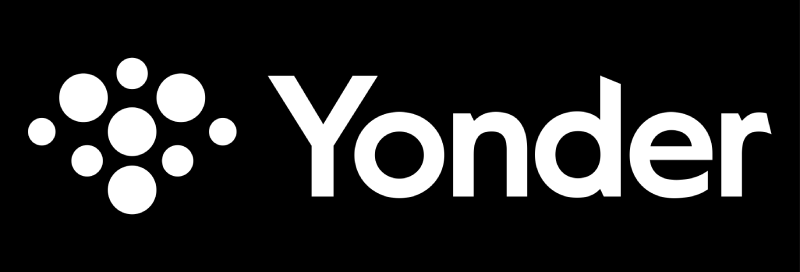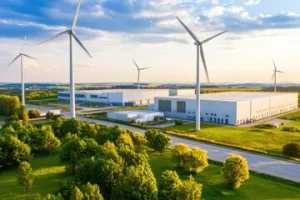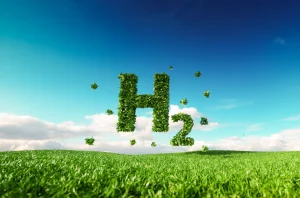Hydrogen Electrolysis Plants Need More Than Water—They Need the Right Power
Water Alone Doesn’t Make Hydrogen
You might have the cleanest water source and an endless stream of renewable electricity. But here’s the catch—without the right power components, your hydrogen electrolysis plant isn’t going to run the way it should.
Green hydrogen production through electrolysis isn’t just about water and electricity. It’s about precision. It’s about control. And most importantly, it’s about how efficiently you convert that electricity into the DC power your electrolysers crave.
In this blog, we’ll break down why power electronics are the unsung heroes of modern hydrogen electrolysis plants. From the outside, green hydrogen production might look like a simple mix of water and electricity, but under the surface, it’s all about how that electricity is delivered. High-quality DC power is not just important; it’s absolutely essential to ensure stable operation, long-lasting equipment, and efficient hydrogen output. We’ll explore the critical roles played by transformers, rectifiers, and converters, and how each of these components supports the overall performance of your system. You’ll also get a look at how power quality directly influences the efficiency, cost, and lifespan of your electrolyser setup, with real-world data to back it up. And finally, we’ll show how YonderH2 steps in with tailor-made solutions that bring it all together, delivering power systems built specifically for green hydrogen projects.
Let’s get into it.
What Is Hydrogen Electrolysis—and Why Is Power So Critical?
At its core, hydrogen electrolysis involves splitting water (H₂O) into hydrogen (H₂) and oxygen (O₂) using electricity. But the electricity that powers this reaction must be direct current (DC)—not alternating current (AC) like what comes from the grid or a wind turbine.
Electrolysers are sensitive to voltage fluctuations. If the input isn’t clean, stable, and appropriately scaled, your hydrogen output suffers. In fact, even slight variations can degrade your electrolyser stack over time, increase operating costs, or lower your yield.
Quick Fact: A Proton Exchange Membrane (PEM) electrolyser typically operates at 1.8 to 2.2 volts per cell. Anything outside that range impacts system performance and lifespan.
Why Water Isn’t Enough: The Power Infrastructure Behind Electrolysis
1. Converter Transformers: Preparing the Voltage
Before AC becomes usable DC, it needs to be transformed to the right voltage level. That’s where converter transformers come in. These specialized transformers condition the incoming power from the grid or renewables like solar and wind, adapting it to the precise needs of the rectification system.
YonderH2 offers converter transformers engineered specifically for hydrogen projects, delivering benefits like phase shifting, harmonic mitigation, and high efficiency under fluctuating loads.
2. Rectifiers and IGBT Converters: Creating Usable DC Power
Once the power is at the right voltage, rectifiers step in to convert it from AC to DC. Traditional thyristor-based systems are common, but IGBT (Insulated-Gate Bipolar Transistor) converters offer a more modern, efficient alternative. They enable better switching, smoother power delivery, and improved control, especially in renewable-heavy installations.
YonderH2’s IGBT-based converters are designed for demanding hydrogen applications, where uptime and precision are everything.
3. Cooling & Control Systems: Maintaining Stability
High-capacity rectifiers and converters generate significant heat. To prevent thermal degradation, advanced cooling systems—whether air-cooled or liquid-based—are essential. Combined with real-time monitoring and control units, these systems ensure consistent, uninterrupted power flow to your electrolyser stack.
How to Choose the Right Power Supply System for Hydrogen Electrolysis
Selecting the right DC power supply for hydrogen electrolysis isn’t just a technical task—it’s a strategic decision that can define your plant’s long-term performance and profitability. Whether you’re setting up a pilot project or scaling to gigawatt-level production, your power infrastructure must be optimized for your specific electrolyser type, load demands, and input energy sources.
First, assess your electrolyser technology—PEM, alkaline, or SOEC—as each has different voltage and current requirements. For example, PEM electrolysers demand low ripple and highly stable voltage, making IGBT-based converters and high-efficiency rectifiers an ideal match. If you’re working with alkaline systems, you’ll still need precise control to avoid overvoltage, which can degrade electrodes over time.
Second, consider the input source. Are you feeding the system from a solar plant, wind turbine, or the national grid? This will affect your need for buffering, harmonic filtering, and voltage regulation. Converter transformers play a key role here by stepping down or isolating the input voltage and ensuring compatibility with downstream components.
Also, think ahead: can your system scale with future demand? Look for modular solutions that allow for phased expansion without overhauling the core power setup. Scalability also means looking at cooling requirements, efficiency at partial loads, and maintenance accessibility.
Most importantly, work with a partner who understands both the power electronics and hydrogen sides of the equation. A well-integrated power system isn’t just about specs—it’s about performance under real-world conditions.
This is where YonderH2 excels. With proven expertise in providing robust, high-performance rectifiers, transformers, and DC-DC converters, we help you engineer for today and build for tomorrow.
Real Impact: What Happens If You Ignore Power Quality?
Let’s look at what poor power infrastructure really costs you:
- Hydrogen Yield Drops: Inconsistent voltage leads to inefficient water splitting and lower hydrogen output.
- Stack Life Shrinks: Harmonic distortion and voltage spikes reduce the operational lifespan of your electrolysers.
- Energy Gets Wasted: Poor power factor and high losses in conversion lead to unnecessary operational expenses.
- Grid Problems Arise: Without harmonic mitigation and load balancing, your plant may face grid compliance issues.
Data Insight: According to Fraunhofer ISE, optimizing power electronics can improve system efficiency by up to 20% in large-scale hydrogen plants.
Why Choose YonderH2 Power Solutions?
When it comes to powering electrolysers, YonderH2 doesn’t just supply components—we engineer purpose-built systems that ensure clean, efficient, and scalable hydrogen production.
Here’s what sets YonderH2 apart:
- High-efficiency rectifiers compatible with PEM and alkaline electrolysers
- IGBT converters that handle variable loads and offer real-time control
- Custom-designed converter transformers for dynamic grid or off-grid setups
- Thermal management and smart control systems to maximize uptime
FAQs: Hydrogen Electrolysis and Power Electronics
Q1. Why can’t electrolysers use AC directly?
Electrolysers require a direct current to initiate and sustain electrochemical reactions. AC would cause irregular voltage and reduce efficiency.
Q2. Are IGBT converters better than traditional rectifiers?
Yes. IGBT converters offer better efficiency, faster switching, and are better suited to renewable energy integration.
Q3. Can YonderH2 systems handle both solar and grid input?
Absolutely. YonderH2’s hybrid-ready systems are designed to handle input from multiple energy sources with smooth transitions.
Q4. What’s the typical power loss in electrolysis systems?
In poorly optimized systems, up to 15% of energy can be lost. With high-efficiency converters, losses are typically under 5%.
Q5. Is cooling that important?
Yes. Proper thermal management protects your converters and rectifiers from overheating, extends their life, and ensures consistent performance.
Why Power is the Backbone of Green Hydrogen
Hydrogen electrolysis might start with water and electricity, but it’s the quality of power that determines the success or failure of your plant.
Choosing the right mix of transformers, rectifiers, and IGBT converters isn’t a luxury—it’s a necessity. Poor power planning leads to lost hydrogen, damaged equipment, and higher operating costs.
With YonderH2, you get the confidence of proven, engineered solutions made specifically for the green hydrogen industry.
Ready to Power Up?
Hydrogen electrolysis plants need more than water—they need the right power behind every clean molecule.
Talk to our team to discover the best-fit rectifiers, converters, and transformers for your hydrogen plant.
Contact Us Now





